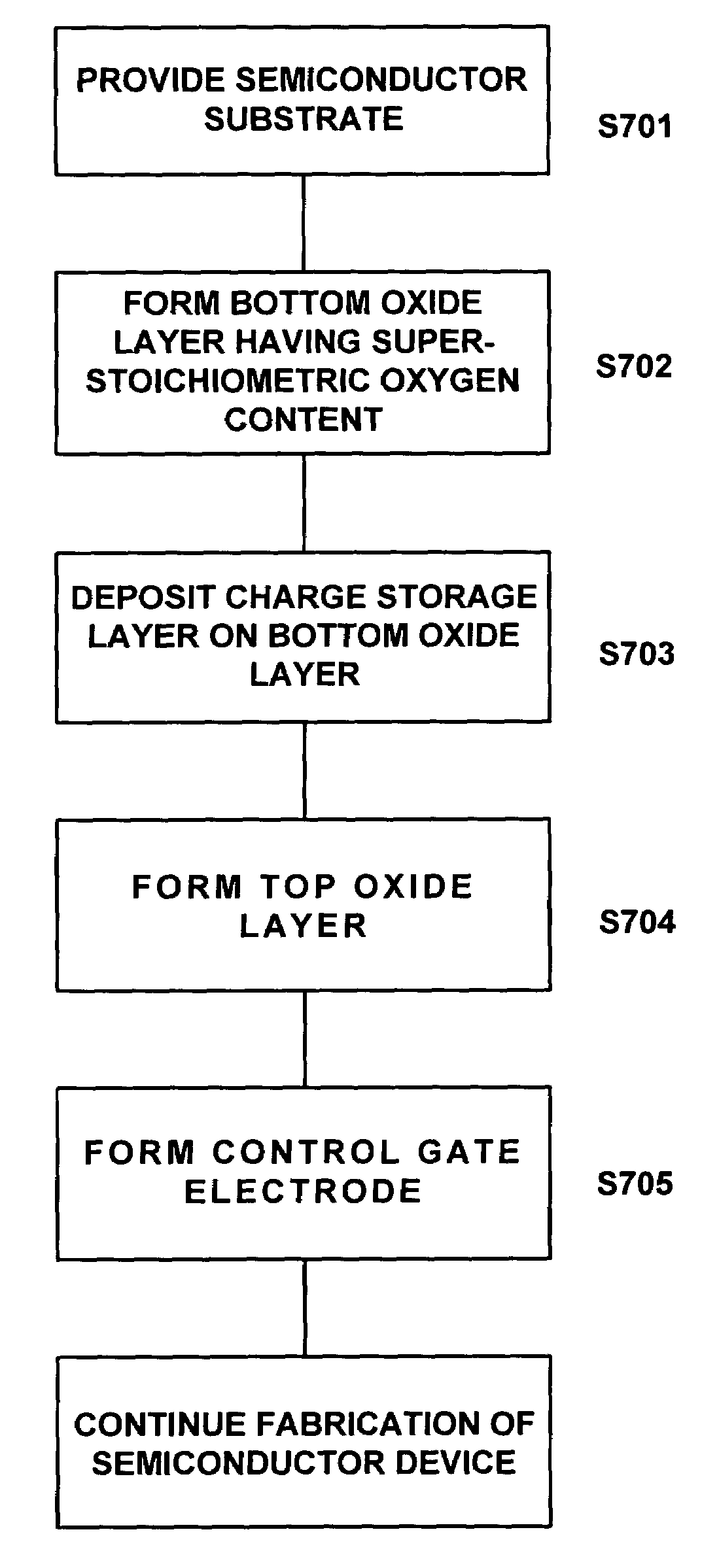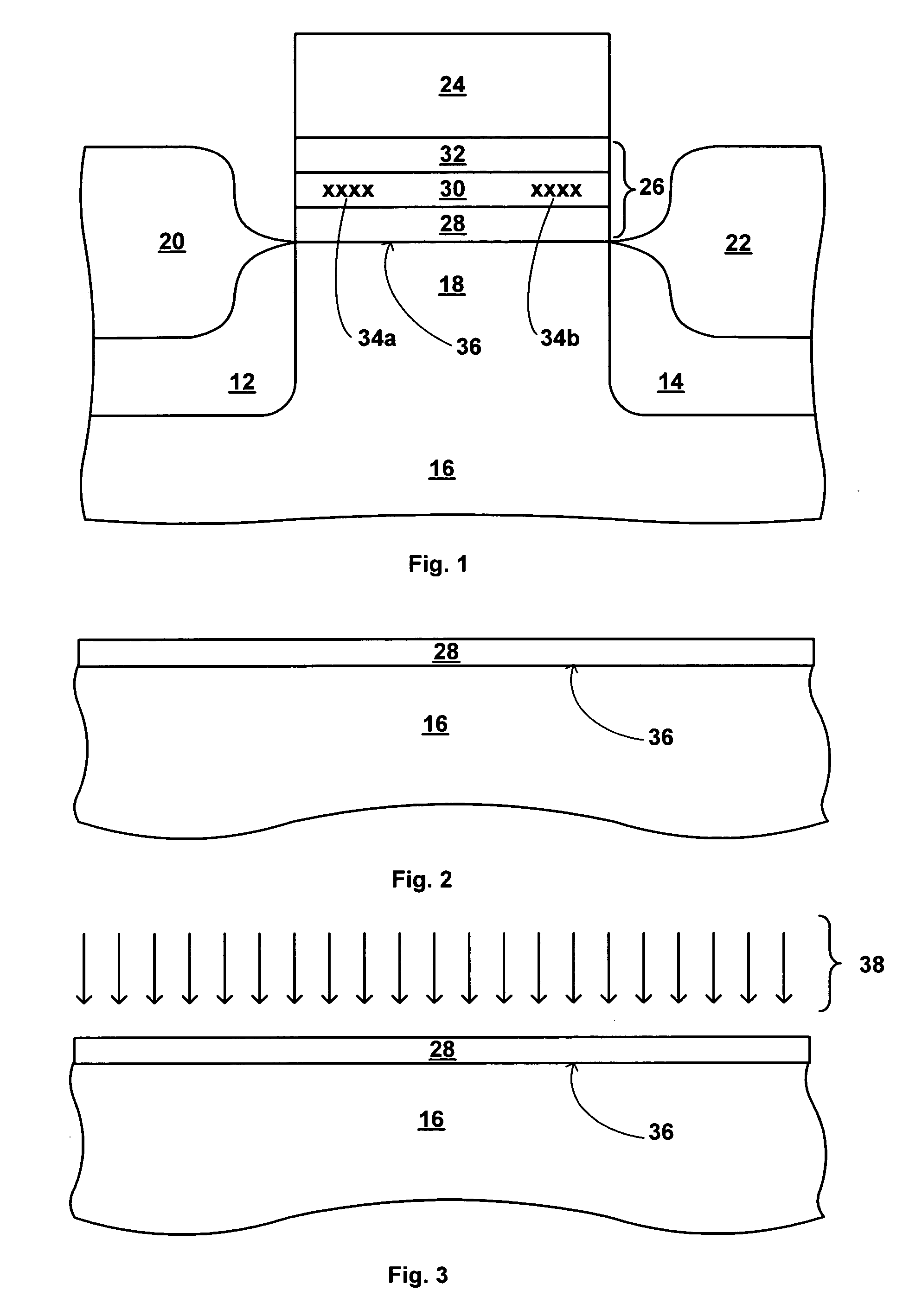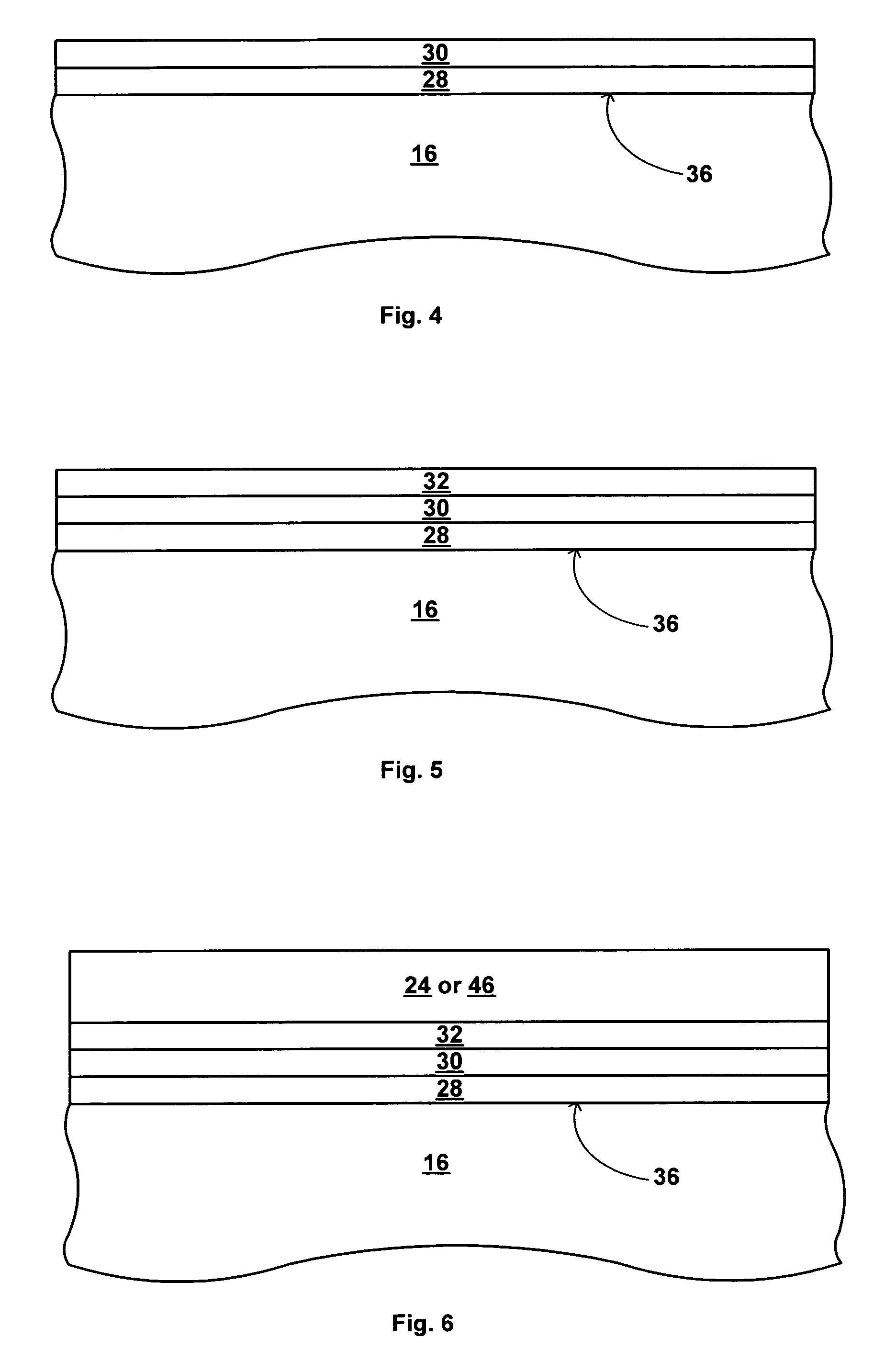ONO fabrication process for increasing oxygen content at bottom oxide-substrate interface in flash memory devices
a fabrication process and flash memory technology, applied in the field of semiconductor device preparation, can solve the problem of limiting the scaling down of the total physical thickness of the ono layer, and achieve the effects of increasing the oxygen content, reducing the thermal budget, and distinct process and economic advantages
- Summary
- Abstract
- Description
- Claims
- Application Information
AI Technical Summary
Benefits of technology
Problems solved by technology
Method used
Image
Examples
first embodiment
[0025]The present invention broadly includes two embodiments. In the present invention, shown schematically in FIG. 7, a bottom oxide layer 28 is formed by a conventional process to include a first oxygen content, and is thereafter treated to increase the oxygen content from the first oxygen content to a second oxygen content. In one embodiment, the bottom oxide layer having the second oxygen content exhibits a reduced charge leakage relative to the bottom oxide layer having the first oxygen content.
second embodiment
[0026]In the present invention, shown schematically in FIG. 8, a bottom oxide layer 28 is formed by novel methods which provide the bottom oxide layer 28 with a super-stoichiometric oxygen content. In one embodiment, the super-stoichiometric oxygen content provides an increased oxygen content relative to the oxygen content in a conventional bottom oxide. In one embodiment, the bottom oxide layer having the super-stoichiometric oxygen content exhibits a reduced charge leakage relative to a conventional bottom oxide layer.
[0027]The first step of both embodiments is the same. In the first step of the present invention, shown schematically in FIG. 7 as Step 701 and in FIG. 8 as Step 801, a semiconductor substrate is provided. The semiconductor substrate may be any appropriately selected semiconductor substrate known in the art. In one embodiment, the semiconductor substrate is a bulk silicon substrate. In one embodiment, the semiconductor substrate is a silicon-on-insulator semiconducto...
PUM
| Property | Measurement | Unit |
|---|---|---|
| temperature | aaaaa | aaaaa |
| temperatures | aaaaa | aaaaa |
| temperature | aaaaa | aaaaa |
Abstract
Description
Claims
Application Information
 Login to View More
Login to View More - R&D
- Intellectual Property
- Life Sciences
- Materials
- Tech Scout
- Unparalleled Data Quality
- Higher Quality Content
- 60% Fewer Hallucinations
Browse by: Latest US Patents, China's latest patents, Technical Efficacy Thesaurus, Application Domain, Technology Topic, Popular Technical Reports.
© 2025 PatSnap. All rights reserved.Legal|Privacy policy|Modern Slavery Act Transparency Statement|Sitemap|About US| Contact US: help@patsnap.com



